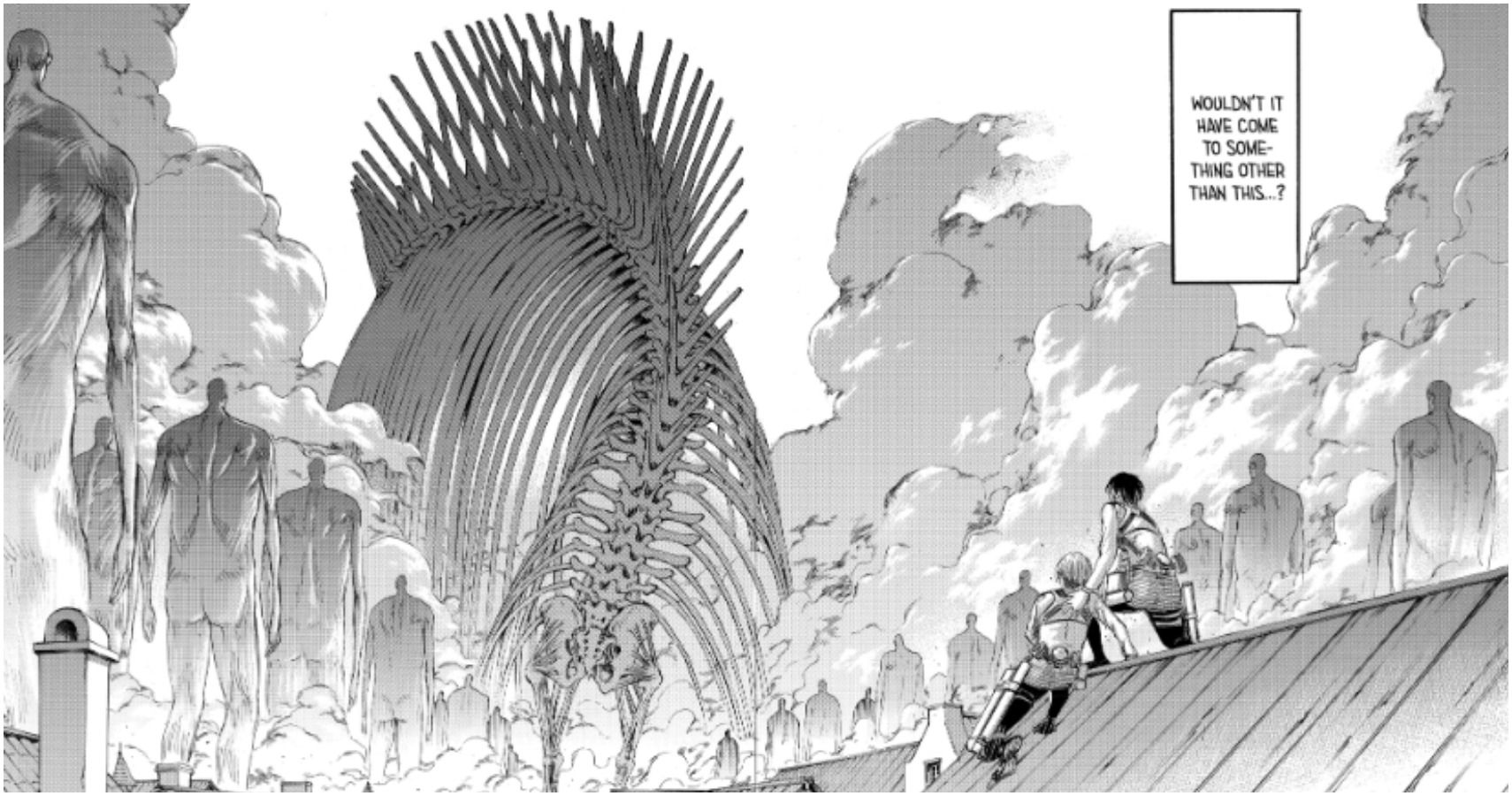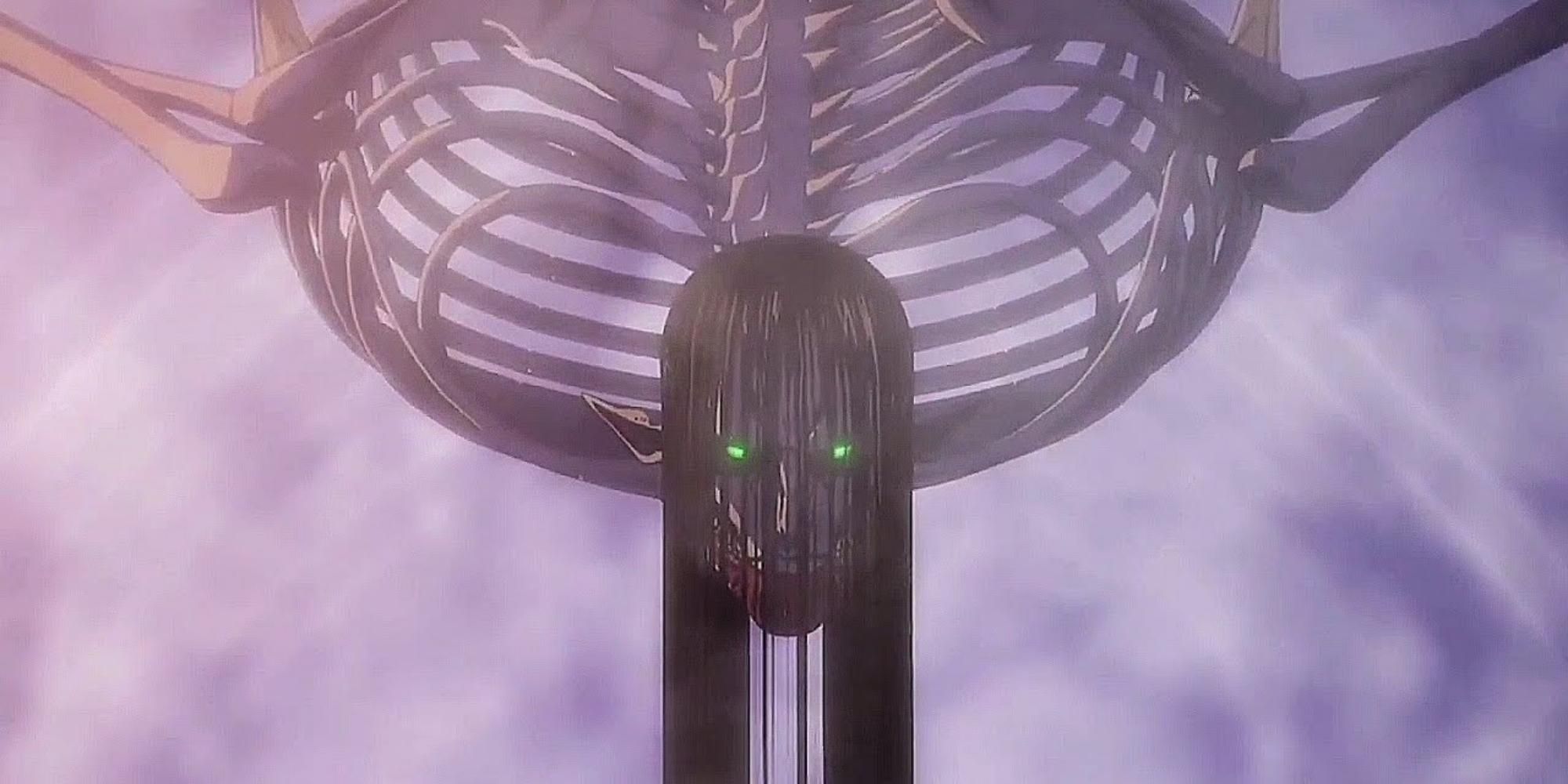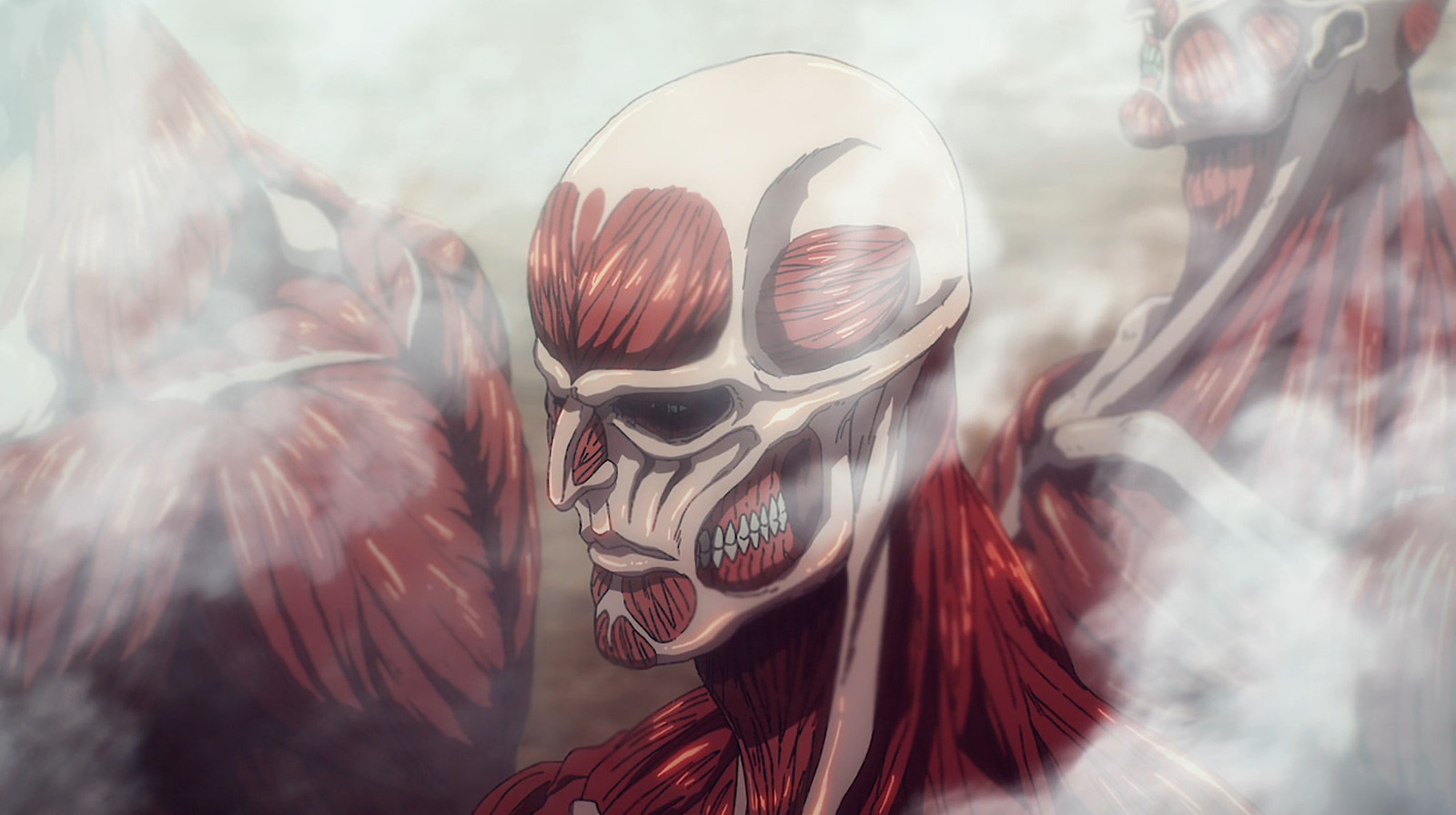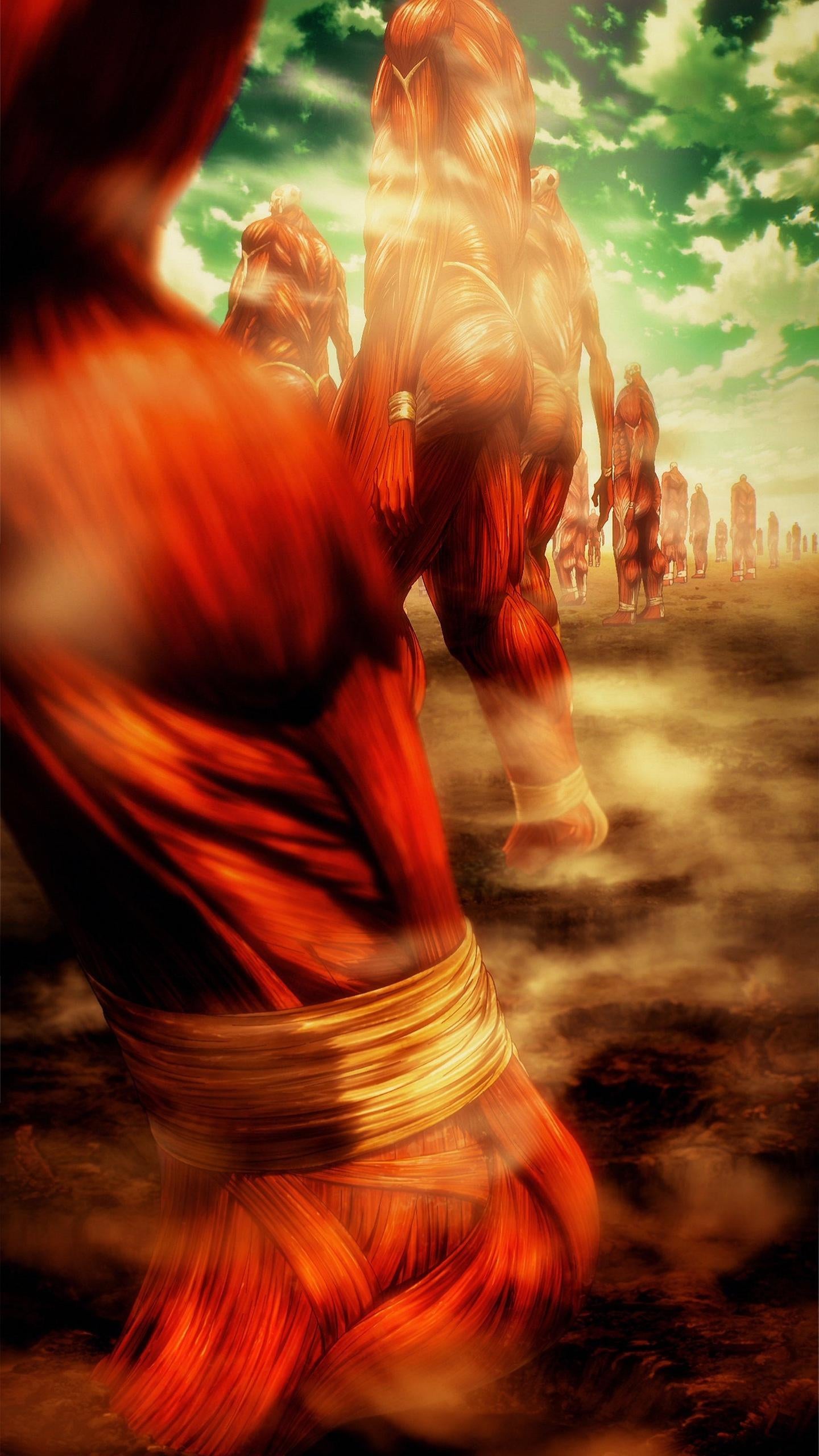Attack on Titan, or Shingeki no Kyojin, has captured the hearts of anime and manga fans worldwide since its debut in 2009. Created by Hajime Isayama, this gripping series combines stunning visuals with intricate storytelling and complex characters. Set in a dystopian world under threat from giant humanoid creatures known as Titans, the narrative explores themes of survival, freedom, and the moral complexities of war. With its immense popularity, it has sparked debates among fans about its plot twists and philosophical underpinnings, making it an enduring topic of discussion in anime culture.
The Concept of the Rumbling

The term "Rumbling" in Attack on Titan refers to a cataclysmic event that can release the colossal Titans embedded within the walls of Paradis Island. These Titans can march across the land, causing devastating destruction to humanity outside the island’s borders. But what does the Rumbling really signify in the context of the story? Let's delve deeper into its implications, motivations, and the moral questions it raises.
What is the Rumbling?
The Rumbling is introduced as a last resort by those who wish to protect the Eldians of Paradis Island from perceived threats. When the walls are breached or when danger approaches, the possibility of unleashing the Rumbling serves as a terrifying form of defense. It raises critical ethical dilemmas about the lengths one is willing to go to secure safety.
Motivations Behind the Rumbling
- Survival: At its core, the Rumbling represents humanity's instinct to survive. The Eldians, historically oppressed and feared, see the Rumbling as a means to ensure their safety.
- Revenge: Fueled by centuries of hatred and conflict, the Rumbling also embodies the desire for vengeance against those who have wronged the Eldian people, particularly Marleyans.
- Hope for a New Future: Some characters view the Rumbling as a way to create a new world free from oppression, even if it requires the destruction of existing societies.
Philosophical and Moral Implications
The Rumbling isn't just a plot device; it poses profound questions about morality, power, and the balance between freedom and security. Characters like Eren Yeager grapple with these challenges, leading to a moral ambiguity that resonates with audiences. Can sacrificing countless lives for the sake of a few ever be justified? Is the escalation of violence ever a legitimate solution? These questions linger as we witness the consequences of the Rumbling unfold throughout the series.
The Rumbling’s Impact on Characters
The decision to initiate the Rumbling is heavily influenced by Eren's character development. Initially portrayed as a hopeful hero, he evolves into a figure of darkness, making choices that align with apocalyptic visions. This shift not only affects Eren but also reverberates through his friends and enemies alike, influencing their decisions and pitting them against each other in unexpected ways. As characters confront their beliefs and motivations, the ramifications of the Rumbling extend beyond mere destruction; it forces a reckoning among those involved.
Conclusion
The Rumbling encapsulates the themes of Attack on Titan, illustrating the series' ability to blend thrilling action with deeper philosophical exploration. By examining the motivations, implications, and character impacts associated with the Rumbling, fans can appreciate the complex narrative that makes Attack on Titan a thought-provoking masterpiece. The Rumbling serves as a pivotal point in the story, challenging viewers to reflect on the heavy costs of war and the struggle for freedom.
Also Read This: Who Won the 2023 Women's Royal Rumble Match?
3. Historical Context of the Rumbling in the Series

The Rumbling in Attack on Titan is not just a plot device; it is deeply rooted in the world’s history and the complex relations between its characters and factions. To understand its significance, we must first rewind the clock to the events that paved the way for this catastrophic mechanism.
For centuries, the world of Eldians and Marleyans has been embroiled in conflict, prejudice, and the scars of war. The Founding Titan, an embodiment of both hope and destruction, played a pivotal role in shaping this conflict. After being treated as lesser beings for generations, Eldians faced oppressions that made them yearn for survival at any cost.
The Rumbling is thus not merely an act of destruction; it is a manifestation of desperation, a final measure taken by the Eldians to assert their place in a world that has perpetually marginalized them. Through various arcs, we've seen how the history of Titan powers is laden with tragedy, beginning from Ymir Fritz, the progenitor of all Titans, whose choices echo through the ages.
When Eren Yeager connects with the powers of the Founding Titan, his decision to unleash the Rumbling is heavily influenced by the historical narrative that frames Eldians as scapegoats. This act is imbued with the history of oppression, violence, and the quest for freedom. It sparks a debate on whether violence is justified in the face of tyranny and whether one can distinguish between heroism and monstrosity.
Furthermore, the Rumbling serves as a reminder of the cyclical nature of history: how the oppressed can become oppressors when fueled by fear and desperation. The series forces us to confront uncomfortable truths about our own history, making the Rumbling not just an event within the narrative but a broader commentary on the human condition.
Also Read This: Who Won the Men's Royal Rumble Match This Year?
4. Key Characters Involved in the Rumbling

When diving into the Rumbling arc, we encounter an ensemble of characters who are pivotal to its unfolding and the ethical dilemmas it raises. Each character's motivations and decisions shape the path of the story significantly.
- Eren Yeager: The protagonist turned antagonist, Eren’s evolution is key to the Rumbling. His willingness to set the destructive plan in motion stems from a culmination of pain, loss, and revelations about freedom. He believes the Rumbling is the only way to secure a future for his people.
- Mikasa Ackerman: Eren's steadfast friend and protector, Mikasa is torn by her loyalty to Eren and the moral implications of the Rumbling. Her internal struggle highlights the complexities of love, friendship, and duty amidst chaos.
- Armin Arlert: The strategist and voice of reason among the group, Armin represents the moral compass in the midst of turmoil. His efforts to understand Eren’s perspective while advocating for peace underscore the ethical conflicts at play.
- Reiner Braun: As a warrior from Marley, Reiner’s experiences provide insight into the psychological scars inflicted by the conflict. His role challenges viewers to empathize with the enemy and consider the broader implications of the Rumbling.
- Historia Reiss: The rightful queen of Eldia, Historia's role is critical in framing the societal expectations and leadership struggles amidst the impending doom of the Rumbling.
The interplay between these characters exemplifies the show’s overarching themes of duty, freedom, and the cost of survival. As the Rumbling unfolds, their choices provoke profound questions: Is total annihilation justified in the pursuit of security? Can peace be achieved through violence? By anchoring these complex narratives within each character's journey, Attack on Titan not only tells a gripping story but also engages viewers in a deep philosophical discussion.
Also Read This: Does Rumble Boxing Have Showers? Exploring the Amenities in Rumble Boxing Facilities
5. Thematic Analysis of the Rumbling

The Rumbling in Attack on Titan isn’t just a plot device; it’s woven intricately into the series' rich thematic tapestry. At its core, the Rumbling represents the *consequences of fear and isolation. For centuries, the inhabitants of Paradis Island have lived in the shadow of the Titans, constantly haunted by the fear of annihilation. This perpetual state of terror ultimately leads to a cycle of hatred and retribution, as seen through the actions of Eren Yeager, who, driven by desperation, chooses to unleash the destructive potential of the Rumbling.
Furthermore, the Rumbling explores themes of freedom and control. Eren's quest for freedom drives him to commit unfathomable acts, suggesting that the pursuit of liberty can come at a colossal cost. This brings into question whether true freedom justifies the means by which it is obtained. The power and devastation this event unleashes force the audience to ponder the fine line between liberation and oppression, illustrating that the pursuit of freedom often necessitates sacrifice—sometimes, tragically, the sacrifice of innocent lives.
Moreover, the moral ambiguity surrounding the Rumbling challenges the viewers to confront their own biases and preconceptions about good and evil. Eren, who many viewers once viewed as a hero, becomes a blatant antagonist, embodying the idea that noble intentions can lead to dire consequences. This moral complexity adds a layer of depth to the narrative, prompting fans to hold a mirror up to their own values and discern what they perceive as justifiable in the face of existential threats.
The Rumbling also speaks to the cyclical nature of violence. History shows us that oppression often breeds resistance, which can lead to even greater oppression. The cycle of revenge is a continuous loop, and the Rumbling is arguably the culmination of years of conflict and misunderstanding between the Eldians and Marleyans. As viewers watch the consequences of Eren’s actions unfold, they can see the fatalistic nature of history repeating itself, leaving them to question whether there is an exit point for peace.
In summary, the Rumbling encapsulates the struggles between freedom and control, fear and destruction, and the complex moral landscapes that define human nature. It isn’t just about the upheaval in the world of Attack on Titan; it’s about the universal themes that resonate with our own experiences of conflict, morality, and the cyclical nature of violence.
Also Read This: Can the Rumbling Be Stopped in Attack on Titan? Theories and Final Outcomes
6. Impact of the Rumbling on the Storyline
The impact of the Rumbling on the storyline of Attack on Titan is nothing short of monumental. This event serves as the catalyst for much of the plot's progression, redefining relationships, ideologies, and the fate of numerous characters. It alters the very fabric of the world Eren and his friends inhabit, leading to pivotal shifts in character development and narrative pacing.
First and foremost, the Rumbling becomes a turning point for Eren Yeager. As the protagonist, Eren's motivations and decisions are increasingly scrutinized. The epiphany he experiences illustrates how power can corrupt, leading him down a dark path that isolates him from his friends and allies. His transformation from a determined youth fighting against oppression into a figure who embodies destruction challenges viewers to grapple with conflicting emotions—can one still empathize with Eren, regardless of his choices?
Additionally, the Rumbling results in shocking character arcs for the supporting cast. Key characters like Mikasa, Armin, and Levi face intense moral dilemmas as they must confront the consequences of Eren’s actions while weighing their loyalty to him. The strain on their relationships deepens, ushering in significant character development as they reconsider their beliefs and values. For instance, Armin's evolution from a passive thinker to a decisive leader underscores the theme of the necessity of tough choices when faced with overwhelming odds.
Moreover, the Rumbling reconfigures the world dynamics. The once clear-cut distinctions between enemy and ally blur as characters from different factions are forced to reckon with the shared threat posed by the colossal Titans. This evolution leads to unexpected alliances and confrontations, making the story more unpredictable and engaging. Characters who may have been at odds are now united against a common enemy—a narrative twist that underscores the interconnectedness of individuals in a time of crisis.
The aftermath of the Rumbling also delves into global repercussions. It showcases the devastating effects of mass violence, challenging the viewers to understand the broader implications of such destruction. It forces societies to grapple with the consequences of their actions, spurring discussions about reconciliation, justice, and the possibility of moving forward in a fractured world.
In essence, the Rumbling serves not only as a plot device but also as a transformative moment that impacts the storyline of Attack on Titan* on multiple levels. It shapes character dynamics, propels the narrative in unforeseen directions, and prompts rich reflections on the nature of freedom, sacrifice, and the cyclical patterns of violence. As the final chapters unfold, the significance of the Rumbling will likely leave fans pondering its implications long after they’ve turned the last page.
Also Read This: Who Is the Winner of Royal Rumble 2017 – A Recap of WWE’s Biggest Moments
7. Fan Reactions and Theories Surrounding the Rumbling
The Rumbling is perhaps one of the most controversial and talked-about plot devices in Attack on Titan. When it became clear that this event was not just a simple story element but a massive, world-altering phenomenon, fans reacted passionately. Social media platforms exploded with discussions, memes, and theories, shaping a rich tapestry of interpretations and emotions.
One of the prominent fan reactions involved the moral ambiguity of the Rumbling. Fans were torn—was Eren Yeager a villain or a tragic hero? Many debated whether his actions could be justified given the dire circumstances of the world within Attack on Titan. The idea of using this apocalyptic event as a means to achieve freedom for Eldians led to intense discussions:
- Some fans sympathized with Eren, arguing that his drastic measures were a response to centuries of oppression and dehumanization.
- Others condemned his actions, viewing the slaughter of countless innocents as morally unforgivable, regardless of their background.
- A segment of the fandom even created theories suggesting that Eren’s path could lead to a cycle of hatred and revenge, echoing historical parallels in our own world.
Within these discussions, theories flourished. Some fans speculated about the possible existence of multiple timelines or alternate realities, suggesting that the Rumbling could have been prevented under different circumstances. Others hypothesized about the potential consequences of the Rumbling reverberating across the world, possibly leading to unforeseen alliances—or further conflicts.
Fan theories weren't limited to narrative implications. Some talented artists and writers took it a step further, creating fan art, alternative endings, or even parodies that examined the theme of the Rumbling in unique and imaginative ways. As the series reached its conclusion, many fans participated in collaborative projects to make sense of the complex emotions that stirred within them, creating a community of support and discussion around a shared experience.
In online forums, YouTube channels dedicated entire episodes to breaking down the Rumbling and its symbolism. Some fans even engaged in heated debates about the role of power, sacrifice, and free will, articulating points through the lens of philosophy and moral philosophy. This complex, layered engagement demonstrates not only how Attack on Titan has resonated with audiences but also how it has encouraged fans to explore deeper themes that transcend its narrative.
8. Conclusion: The Legacy of the Rumbling in Attack on Titan
As we reflect on the monumental significance of the Rumbling, it’s clear that this event encapsulates the essence of Attack on Titan. It serves as a striking representation of humanity's darkest impulses, the struggle for survival, and the profound complexities of freedom—questions that resonate with viewers far beyond the confines of the story. The narrative invites us to explore our values and challenge our perceptions of morality.
Moreover, the Rumbling acts as a cathartic element, showcasing the heartbreaking costs that come with desperation and the pursuit of hope. The discussions surrounding it reveal just how art, in its various forms, reflects societal issues, including war, trauma, and the cyclical nature of history. In doing so, it urges us to consider how our choices, both individually and collectively, shape our future.
Moving forward, the legacy of the Rumbling will undoubtedly linger. Whether it's through cosplay, fan art, or critical analysis, this story arc will continue to fuel discussions about the themes of freedom, sacrifice, and humanity's potential for both destruction and redemption. As fans celebrate the series' conclusion, the Rumbling will remain a focal point—one that embodies the epic, tragic, and profoundly human journey we’ve all taken together through the world of Attack on Titan.
In the end, the Rumbling is more than just an event; it is a narrative device that resonates deeply, offering lessons that are as relevant today as they were when Attack on Titan first captivated our imaginations. And as the dust settles, fans will keep exploring its legacy, ensuring that the story—and its lessons—are never forgotten.
 admin
admin








